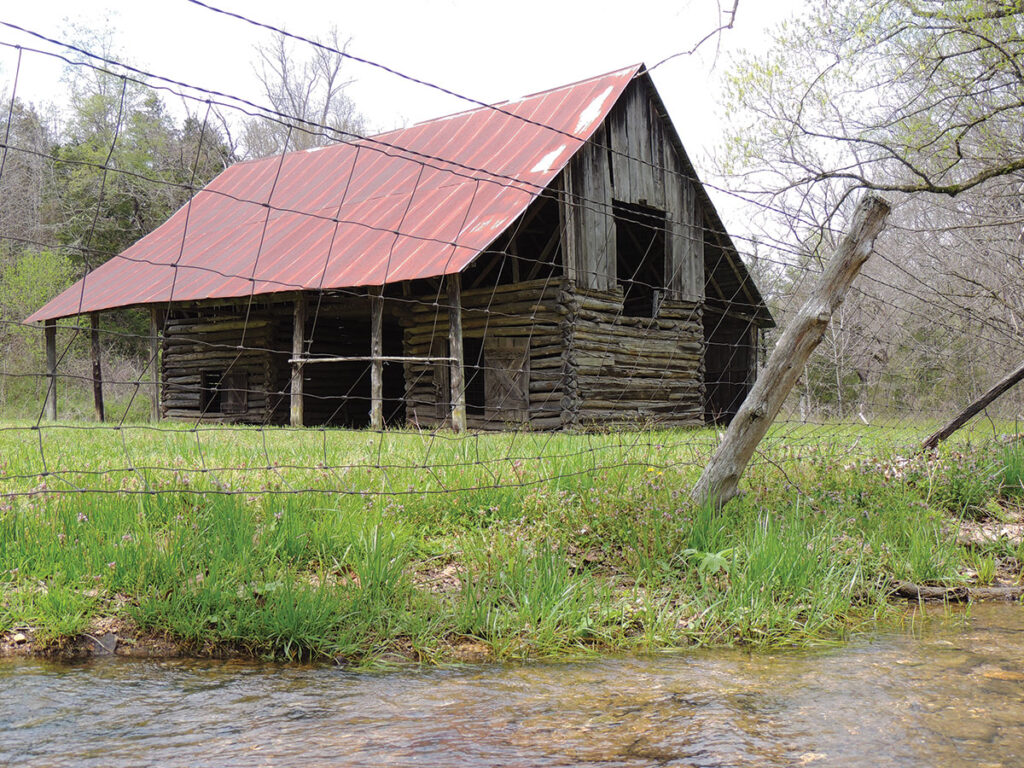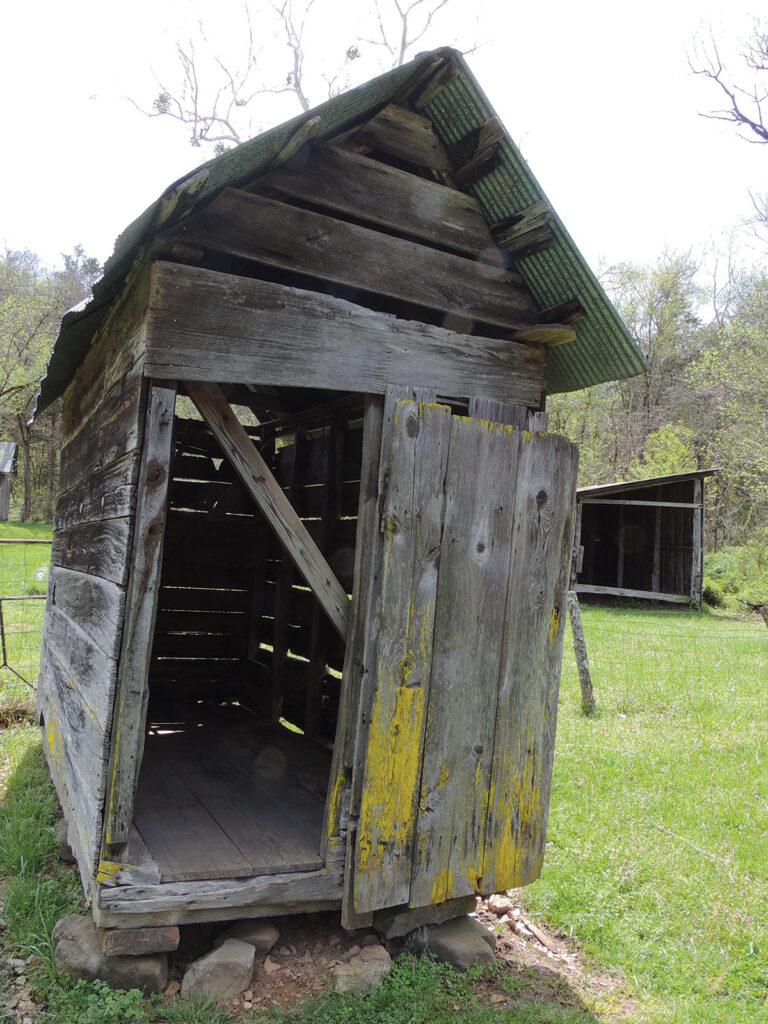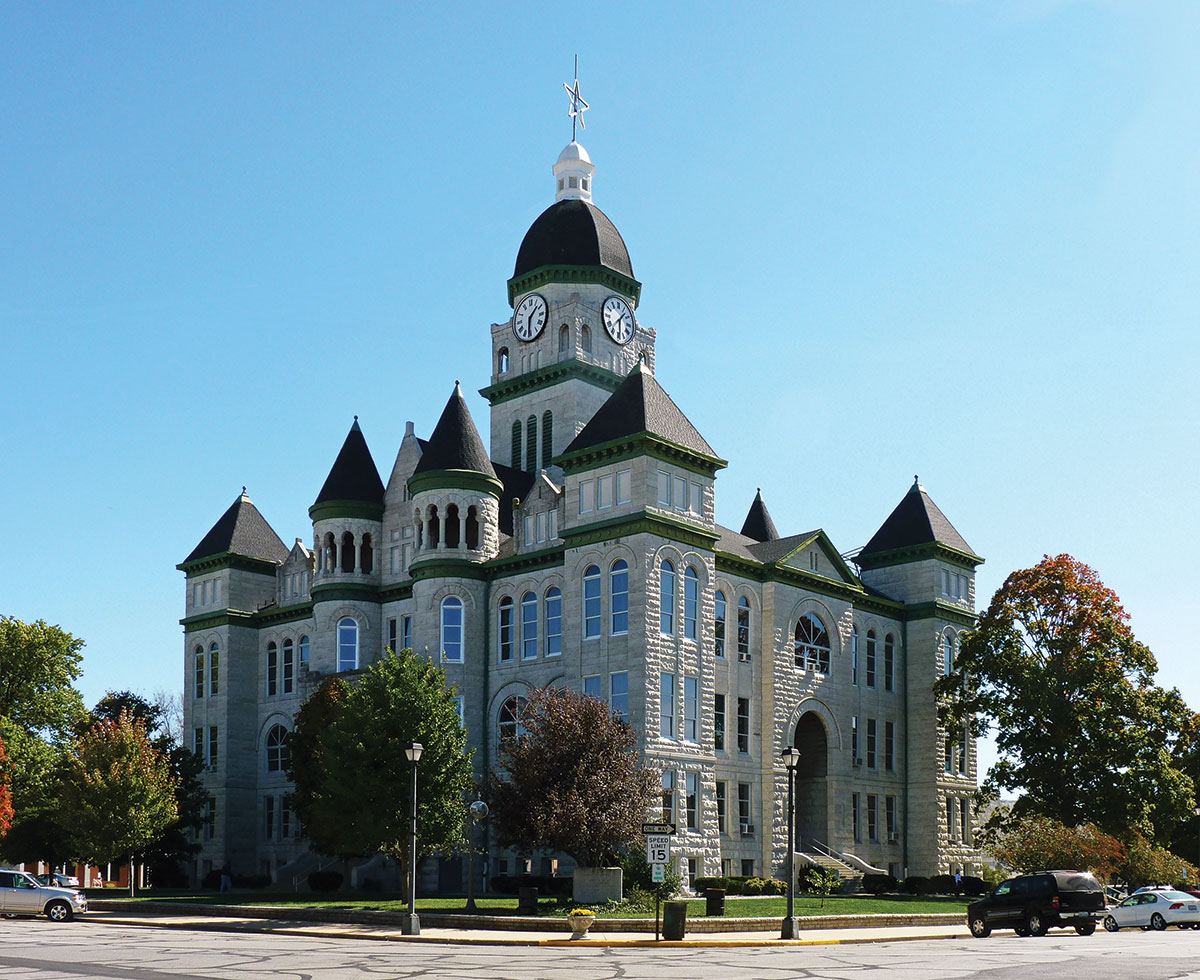
The barn of the Parker-Hickman Homestead is a time capsule from the 1800s
NEWTON COUNTY, ARK. – Nestled in the heart of Newton County, Ark., lies the historic Parker-Hickman Homestead.
Just a stone’s throw from the Erbie Campground and the banks of the Buffalo National River stands a reminder of the rich agricultural heritage that once dominated the landscape.
Newton County is steeped in history, with its rolling hills and lush landscapes that provide a backdrop to tales of early settlers and pioneers. Among the many historical gems that dot the landscape of Newton County, the Parker-Hickman Homestead serves as a time capsule from the 1800s. It continues to captivate both locals and tourists, young and old alike. Like many others in the area, this homestead stands as a testament to the hard work and true pioneering spirit that continues today.
Located on the south side of the Buffalo River, the Parker-Hickman Homestead is a sight to behold. For those traveling to the site by car, the best way to reach this beautiful homestead is to take Highway 7 North out of Jasper for about 3.5 miles, turn left on the Erbie Campground road, and follow the signs to Erbie Campground. Go past the campground, and the homestead will be to your left at the bottom of the hill. There is a designated parking area. If drivers cross the river at the low water crossing, turn around and try again.
For hikers, the Homestead is accessible through the Buffalo River Trail. The trail cuts through the middle of the property and is a picturesque sight. For all of you cemetery explorers, the Cherry Grove Cemetery is through the homestead gates and up the hill. Take advantage of this almost-forgotten place.

Brothers Alvin and Greenburry Parker founded the Parker-Hickman Homestead. According to the National Park Service, these immigrants from Tennessee settled these bottomlands in the 1840s. The 195-acre homestead sustained around nine families throughout its time of abundance and prosperity. It started with the Parkers and ended with Newton County native J.D. Hickman purchasing the property in 1912.
This homestead was an epicenter for agricultural production and abundance between the two families. The property was placed under the National Register of Historic Places in 1987. It may have lived its last day as a self-sustaining farm. However, it lives on as a proclamation to future generations how hard work and ingenuity can teach future agriculturalists about sustainability in their agricultural endeavors.
In the untouched land, the Parker Brothers faced the challenging yet rewarding task of homesteading. Clearing land, raising livestock, and building homes and barns were just the beginning of their journey. As time passed, the brothers began planting crops such as corn, wheat, and oats, staples that sustained and supplied them and surrounding families with much-needed supplies. The brothers even built a granary (above-ground crop storage house), which they and surrounding families utilized.
The brothers were also tasked with producing their livestock, which played a vital role in the self-sufficiency of the homestead. The brothers raised cattle, hogs, and chickens to provide the family with meat, dairy products, and eggs. The animals required constant care and attention, giving insight into the importance of livestock within the culture of the Ozarks today. Four springs on the property provided water for the owners and their livestock.

Also, the Parker Branch Creek runs through the middle of the homestead with crystal clear and refreshing water. There is a big rock where visitors can sit and enjoy the babbling stream.
The family also harvested local timber and refused any assistance from the government. The Parkers and the Hickmans were proud to remain independent as a self-reliant agricultural operation. The only government assistance accepted by the Hickman family was from the Works Progress Administration (WPA). The WPA installed a privy (toilet) in 1972, which is the most modern building on the property. The facilities on the property include an exemplary cluster of barns, sheds, a smokehouse, and a cabin. Each farmstead structure was carefully crafted from locally harvested red cedar and included Appalachian-style design elements. These design elements included techniques like the dovetail notch within the cabin’s walls. The notches are so airtight that, to this day, not even a piece of paper can fit through the groves. The Parker brothers’ craftsmanship and care in creating their homestead displays the true pioneer spirit that brought this homestead to life.
Agriculture in the Ozarks is not only about being self-reliant, but it is about community as well. The Parker Brothers built a small store into their cabin, providing everyone with essential materials. This store served as a hub for community and cooperation. Folks would gather here to buy items, exchange knowledge, and help one another in the pioneering days of the Ozarks. There was a larger store across the river. Families would often come to this little store due to the river being too high to cross.
Even today, Newton County still has a rich agricultural presence. You will find Newton Countians still adhere to the farming ways of growing livestock and crops and its tremendous commitment to the community. Go anywhere in the county, and you will find families farming the land just as their former generations did. While many technological advancements have arisen, farming is still a massive part of the lifestyle, and you are guaranteed to find individuals who practice techniques from years past. Visitors are also guaranteed to encounter friendly southern hospitality, which still presides in the area today.
Today, the Parker-Hickman Homestead is more than just a historical site; it’s an educational resource that allows visitors to connect with the agricultural history of the Ozarks. Through a self-guided tour, visitors can enjoy the beautiful scenery and appreciate this once-great homestead’s historical and agricultural significance.
The beautiful rolling hills of Newton County hold many gems. The homestead’s rich history and agricultural roots are the source of its appeal and attraction for visitors. As the oldest homestead on the Buffalo River, the Parker-Hickman Homestead connects deeply to the past and preserves a heritage for future generations.







